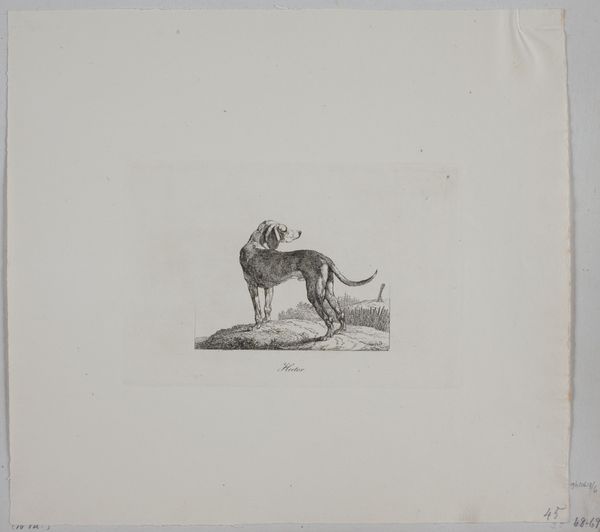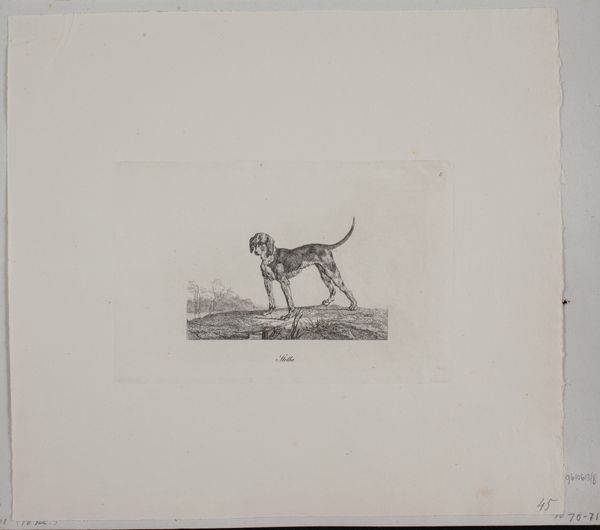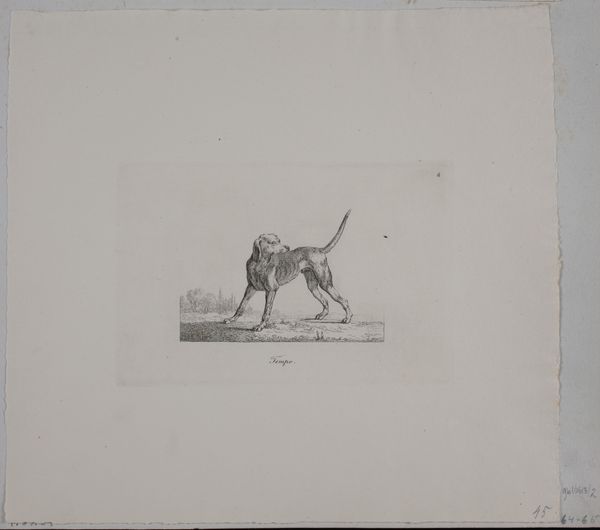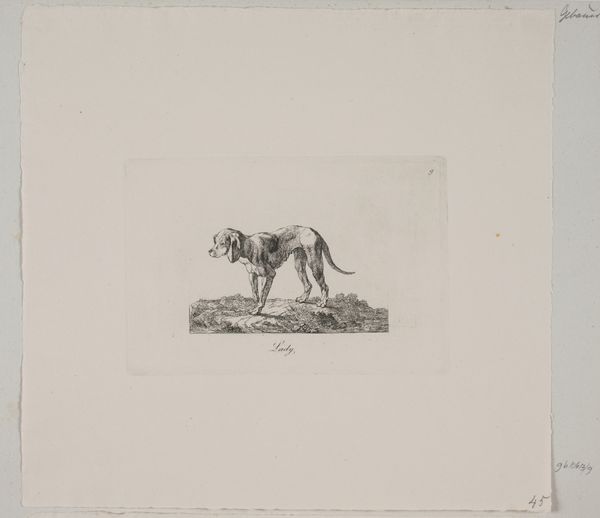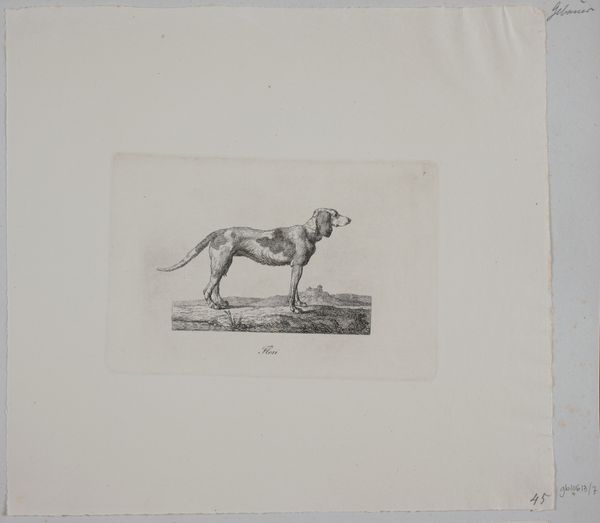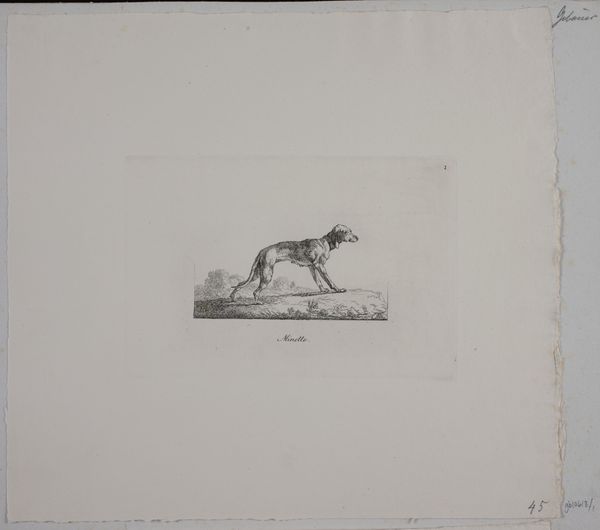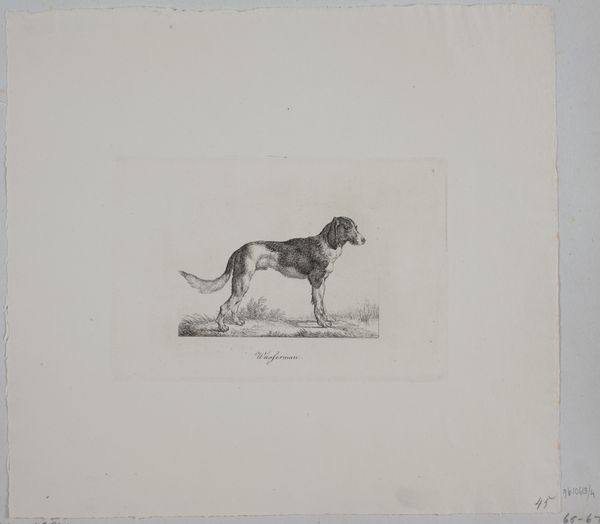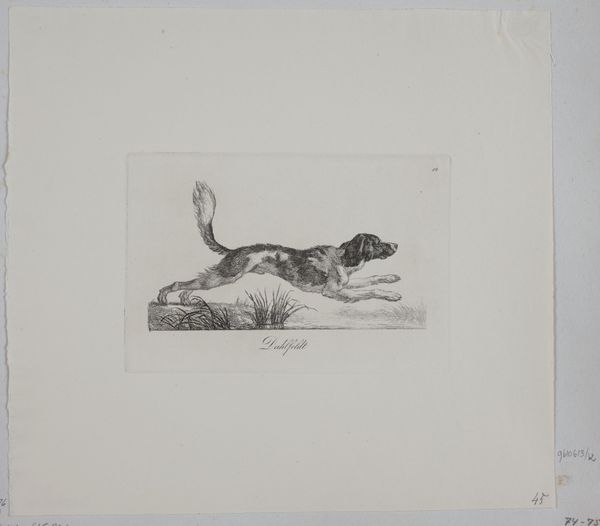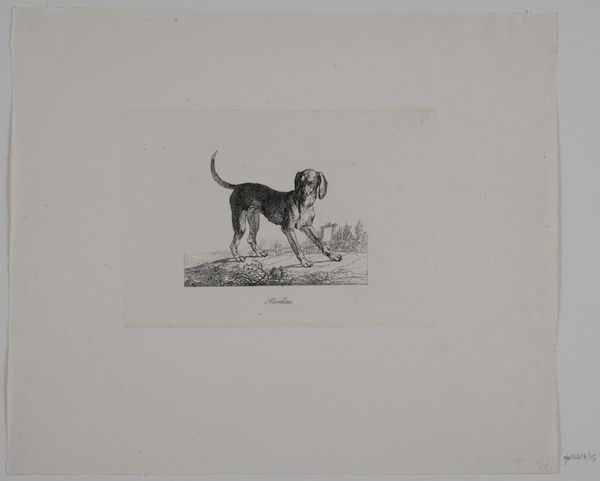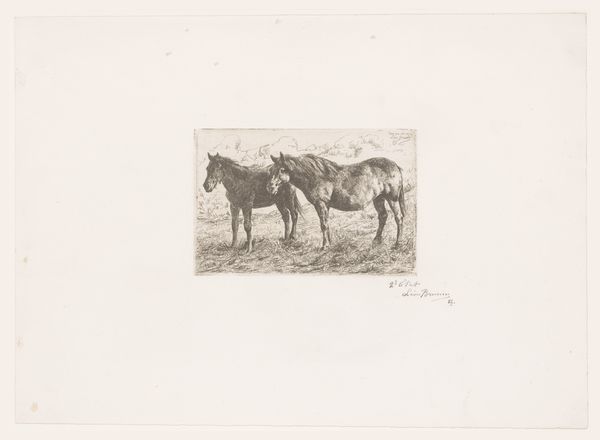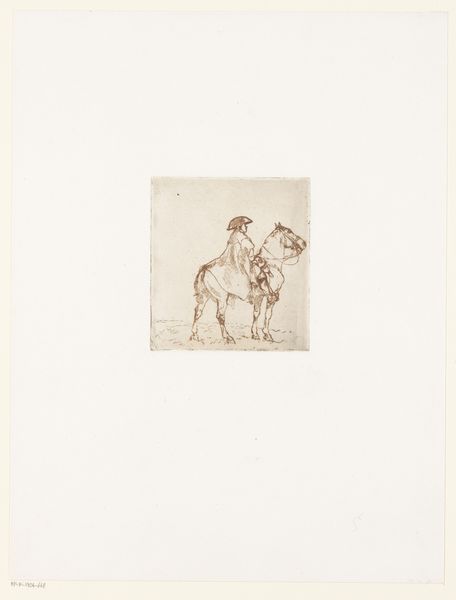
drawing, print, pencil, engraving
#
portrait
#
drawing
#
animal
# print
#
landscape
#
pencil
#
engraving
#
realism
Dimensions: 110 mm (height) x 162 mm (width) (plademaal)
Editor: This is "Kellwuth," a pencil and engraving from 1821 by Christian David Gebauer, housed here at the SMK. I find its simple presentation quite charming—almost like a formal portrait, but of a dog! What strikes you when you look at it? Curator: The focus on the individual animal is certainly prevalent; consider how the dog's pose mirrors human portraiture of the time. This is not merely a representation of an animal, but almost an anthropomorphic depiction, which carries deep symbolism regarding the relationship between humans and nature. What does the name 'Kellwuth' evoke for you? Editor: It sounds a bit harsh, a Germanic name perhaps? Maybe related to hunting, given it’s a hound? Curator: Precisely. Think of hounds not only as animals, but as symbols of loyalty and hunting prowess. Notice the carefully rendered details—the musculature, the intelligent eyes. How do these details shape our perception? This isn’t just about a dog; it reflects the cultural values projected onto animals during the 19th century, ideas of control, partnership and even status. Editor: So, it’s less about the dog itself, and more about what the dog *represents* to people back then? It's interesting how our relationship with animals, and how we depict them, tells us so much about ourselves. Curator: Precisely. Reflecting on "Kellwuth" invites us to explore those changing perspectives, to confront and contextualize, our own assumptions about human/animal interactions then and now. It’s not simply an image of a dog, but an artifact pregnant with meaning, one where the symbolism far outweighs the object itself.
Comments
No comments
Be the first to comment and join the conversation on the ultimate creative platform.
